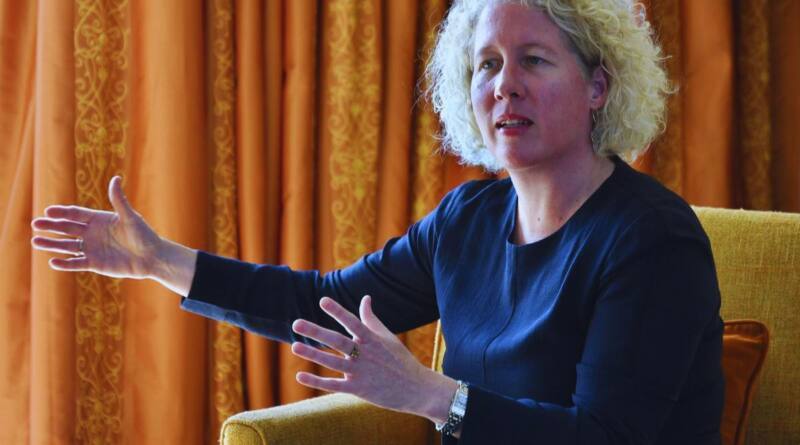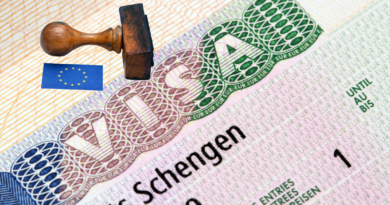India Is The Second-largest Source Of Students For Australia Now
Australia is currently deepening and broadening its connections with India in general and Karnataka in particular by expanding collaborations beyond trade and exploring bilateral ties in a variety of mutual interest areas. In an exclusive interview with The Hindu, Hilary McGeachy, the newly appointed Australian Consul General for Bengaluru, discussed business opportunities in technology, innovation, education, STEM training, wetland agriculture, space technology, green energy, and indigenous art. especially as the Indian diaspora in the country grows significantly.
Excerpt from the interview:
The Indian diaspora in Australia is growing significantly. How do you see this?
Approximately 4% of Australia’s population today is of Indian descent. Surprisingly, between 2011 and 2021, the number of Indians in Australia doubled. The Indian community is Australia’s second-largest and fastest-growing international community. According to the 2021 census, there are approximately 976,000 people in Australia with Indian heritage, out of a total population of approximately 26 million. The number is constantly increasing, so India is right there with us.
How does the new trade agreement affect interactions between India and Australia?
India is Australia’s sixth-largest trading partner, with two-way trade in goods and services worth $48 billion (AUD) in 2022. The recent Economic Cooperation and Trade Agreement (ECTA) eliminated tariffs on the majority of critical minerals used in solar panels, electric vehicles, wind turbines, mobile phones, and other applications. The utilisation rate for Indian exports to Australia is very high (77%), indicating that the agreement has a positive impact. Meanwhile, Australian imports of Indian apparel and agricultural products rose by 20% and 13%, respectively.
What collaborations is Australia looking into in education?
We are exploring partnerships with Karnataka and Telangana in several areas, including education. Karnataka, like Australia, has high-quality educational institutions.
We both have a very welcoming environment for educational collaborations, and we are currently expanding our number of partnerships in this field. Indian students can study in Australia and also obtain a work permit to hone their skills, and there are currently approximately 120,000 Indian students in Australia. We encourage universities to open in Karnataka and other parts of India. We are currently in communication with the state government here. Deakin University in Australia has already established a teaching campus in Gujarat International Finance Technology City, and Wollongong University is set to follow suit.
India has traditionally been an agrarian country. What role can Australia play in promoting the best agricultural practices?
The Australian government has launched several initiatives to strengthen the ecosystem and encourage two-way collaboration, including skill development and research funding. The Australian government has awarded the University of Adelaide $1.8 million to lead a consortium of experienced partners in strengthening India’s agricultural sector. The project’s goal is to identify emerging job opportunities and develop critical skills and advanced practices to meet India’s agricultural skill requirements. On the funding front, the Australian Centre for International Agriculture Research is working with Australian, Indian, and international researchers to improve wheat and pulse crops in India. Furthermore, the Australia-India Strategic Research Fund supports research into more resilient rice, sugarcane, chickpeas, and wheat.
The Australia-India Water Centre brings together Australian and Indian universities to develop solutions for sustainable water management. In addition, Indian dairy cooperatives and the Australian dairy industry are collaborating on methane reduction issues.
Do you see any synergy between Australia’s abundant lithium deposits and India’s focus on EVs?
Australia’s identified mineral resources for 2023 show that in 2022, it remained the world’s top lithium producer (52%), as well as a top five producer of cobalt (3%), manganese ore (10%), rare earth (5%), rutile (27%), tantalum (4%), and zircon (25%). In addition to being a global leader in the supply of critical minerals, many new deposits have been discovered or are being developed.
The Economic Cooperation and Trade Agreement (ECTA) eliminates tariffs on the majority of critical minerals used in solar panels, electric vehicles, wind turbines, mobile phones, and other applications. Furthermore, the Comprehensive Economic Cooperation Agreement (CECA), which is currently being negotiated, will strengthen supply chains for the minerals required by India to fuel its manufacturing and exports. Geoscience Australia leads the Australian government’s $225 million Exploring for the Future programme, which aims to support a strong economy, a resilient society, and a sustainable environment.




